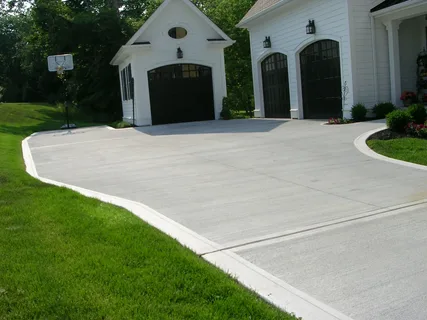Introduction
A cracked concrete driveway can be an eyesore, but fear not—repairing it is a manageable DIY project that can restore your home’s curb appeal. In this guide, we’ll take you through easy steps to repair those unsightly cracks and have your driveway looking as good as new.
Understanding Concrete Cracks
Concrete cracks for various reasons, including weather changes, soil movement, and heavy loads. Before you start repairs, understanding the type and cause of the cracks will guide your approach.
Tools and Materials
Gather the necessary tools and materials, including a concrete repair mix, trowel, caulk gun, safety gear, and a pressure washer. Having the right equipment ensures a smoother repair process.
Safety First
Before beginning any repair work, prioritize safety. Wear protective gear, including gloves and safety glasses, and ensure the work area is well-ventilated.
Assessing the Damage
Examine the cracks in your driveway. Different types of cracks may require specific repair techniques. Assess the depth, width, and overall condition to determine the appropriate approach.
Cleaning and Preparation
Clean the cracked area thoroughly using a pressure washer. Remove debris, dirt, and loose concrete. Proper preparation is crucial for a lasting repair.
Filling Small Cracks
For hairline cracks, use a concrete repair caulk or a patching compound. Apply the material with a caulk gun, ensuring it fills the crack completely. Smooth the surface with a trowel.
Repairing Larger Cracks
For larger cracks, a vinyl concrete patch can provide a durable solution. Mix the patch according to the manufacturer’s instructions and apply it to the crack, leveling it with a trowel.
Resurfacing the Driveway
Consider resurfacing the entire driveway for a uniform look. A resurfacing mix can cover small imperfections and provide a fresh appearance to your driveway.
Sealing for Protection
Once the repairs are complete, seal the entire driveway with a concrete sealer. This protects the surface from future damage and enhances its longevity.
Tips for Preventing Future Cracks
Explore preventive measures such as installing expansion joints, controlling water runoff, and avoiding the use of de-icing chemicals. These steps can help minimize the risk of future cracks.
Hiring a Professional vs. DIY
Evaluate the extent of damage and your skill level. While small repairs are DIY-friendly, larger projects may require professional assistance. Knowing when to call an expert is crucial.
Cost Considerations
Repair costs vary depending on the extent of damage. DIY repairs are cost-effective, but larger projects may have associated expenses. Compare costs before deciding on the best approach.
Time Frame for Repairs
Most driveway repairs can be completed over a weekend. However, larger projects or resurfacing may require more time. Plan accordingly to minimize inconvenience.
Conclusion
Repairing a cracked concrete driveway doesn’t have to be a daunting task. With the right tools, materials, and a bit of know-how, you can revitalize your driveway and enhance your home’s curb appeal. Take pride in a job well done!



